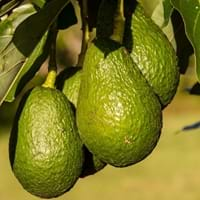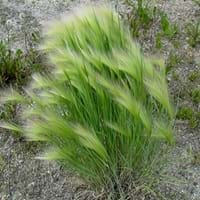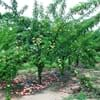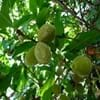Life Span
Perennial
Perennial
Origin
Central America, South America
North America, South America, Europe, Southern Africa, Asia
Types
Not Available
Not Available
Habitat
Subtropical climates
Cultivated Beds
USDA Hardiness Zone
9-15
Not Available
AHS Heat Zone
12-10
Not Available
Sunset Zone
9, 15, 16, 17, 18, 19, 20, 21, 22, 23, 24
Not Available
Habit
Spreading
Not Available
Minimum Height
Not Available
Minimum Width
Not Available
Flower Color
White, Yellow
Green
Flower Color Modifier
Bicolor
Bicolor
Fruit Color
Purple, Gold, Black
Brown
Leaf Color in Spring
Dark Green
Green, Light Green, Gray Green
Leaf Color in Summer
Dark Green
Light Green
Leaf Color in Fall
Dark Green
Not Available
Leaf Color in Winter
Light Green
Not Available
Plant Season
Spring, Summer, Fall, Winter
Not Available
Sunlight
Full Sun
Full Sun
Type of Soil
Clay, Loam, Sand
Loam, Sand
The pH of Soil
Acidic, Neutral, Alkaline
Not Available
Soil Drainage
Well drained
Well drained
Bloom Time
Early Spring, Spring, Winter, Late Winter
Spring, Summer
Tolerances
Drought
Drought
Where to Plant?
Ground, Pot
Ground
How to Plant?
Seedlings, Stem Cutting
Divison, Seedlings
Plant Maintenance
Medium
Medium
Watering Requirements
Average Water Needs
Average Water Needs, Do Not over Water
In Summer
Lots of watering
Lots of watering
In Spring
Moderate
Moderate
In Winter
Average Water
Average Water
Soil pH
Acidic, Neutral, Alkaline
Not Available
Soil Type
Clay, Loam, Sand
Loam, Sand
Soil Drainage Capacity
Well drained
Well drained
Sun Exposure
Full Sun
Full Sun
Pruning
Remove damaged leaves, Remove dead branches, Remove dead leaves
No need to prune
Fertilizers
All-Purpose Liquid Fertilizer
Nitrogen
Pests and Diseases
Weevils
wheat rust
Plant Tolerance
Drought
Drought
Flowers
Insignificant
Not Available
Flower Petal Number
Single
Single
Edible Fruit
Yes
Not Available
Foliage Texture
Coarse
Fine
Foliage Sheen
Glossy
Matte
Attracts
Not Available
Birds
Allergy
Oral Allergy
Pollen
Aesthetic Uses
Not Used For Aesthetic Purpose
Showy Purposes
Beauty Benefits
Not Available
Not Available
Environmental Uses
Air purification
Air purification
Medicinal Uses
Antidepressant, Detoxification, Digestive, Improve heart health, osteoporosis
Swollen eyelids
Part of Plant Used
Fruits
Root, Seeds
Other Uses
Food for animals, Used as a nutritious food item, Used for its medicinal properties
Roasted seed is used as a coffee substitute, Used as a cereal in making bread, porridge
Used As Indoor Plant
No
No
Used As Outdoor Plant
Yes
Yes
Garden Design
Edible, Fruit / Fruit Tree, Shade Trees, Street Trees, Topiary / Bonsai / Espalier, Tropical
Cutflower, Dried Flower/Everlasting, Edible, Wildflower
Botanical Name
PERSEA americana 'Stewart'( Mexican Strain)
HORDEUM jubatum
Common Name
Avocado, Mexican Avocado
Foxtail Barley, Wild Barley
In Hindi
Mexican Avocado
Foxtail Barley
In German
Mexican Avocado
Mähnengerste
In French
Mexican Avocado
Foxtail Barley
In Spanish
Mexican Avocado
La cebada de cola de zorra
In Greek
Mexican Avocado
αλωπέκουρου Κριθάρι
In Portuguese
Mexican Avocado
Foxtail Barley
In Polish
Mexican Avocado
włośnica Jęczmień
In Latin
Mexican Avocado
Hordeum foxtail
Phylum
Magnoliophyta
Magnoliophyta
Class
Magnoliopsida
Liliopsida
Clade
Angiosperms, Magnoliids
Angiosperms, Commelinids, Monocots
Tribe
Not Available
Hordeeae
Subfamily
Not Available
Pooideae
Number of Species
Not Available
Not Available
Properties of Mexican Avocado and Foxtail Barley
Wondering what are the properties of Mexican Avocado and Foxtail Barley? We provide you with everything About Mexican Avocado and Foxtail Barley. Mexican Avocado doesn't have thorns and Foxtail Barley doesn't have thorns. Also Mexican Avocado does not have fragrant flowers. Mexican Avocado has allergic reactions like Oral Allergy and Foxtail Barley has allergic reactions like Oral Allergy. Compare all the properties and characteristics of these two plants. Find out which of these plant can be used as indoor plant. If you are interested to decorate your house and garden, find out aesthetic uses, compare them and select the plant which will beautify your surrounding. Along with beautification, try comparing medicinal and edible uses of Mexican Avocado and Foxtail Barley and you can choose the plant having best and most benefits.
Season and Care of Mexican Avocado and Foxtail Barley
Season and care of Mexican Avocado and Foxtail Barley is important to know. While considering everything about Mexican Avocado and Foxtail Barley Care, growing season is an essential factor. Mexican Avocado season is Spring, Summer, Fall and Winter and Foxtail Barley season is Spring, Summer, Fall and Winter. The type of soil for Mexican Avocado is Clay, Loam, Sand and for Foxtail Barley is Loam, Sand while the PH of soil for Mexican Avocado is Acidic, Neutral, Alkaline and for Foxtail Barley is Not Available.
Mexican Avocado and Foxtail Barley Physical Information
Mexican Avocado and Foxtail Barley physical information is very important for comparison. Mexican Avocado height is 910.00 cm and width 610.00 cm whereas Foxtail Barley height is Not Available and width Not Available. The color specification of Mexican Avocado and Foxtail Barley are as follows:
Mexican Avocado flower color: White and Yellow
Mexican Avocado leaf color: Dark Green
Foxtail Barley flower color: Green
- Foxtail Barley leaf color: Green, Light Green and Gray Green
Care of Mexican Avocado and Foxtail Barley
Care of Mexican Avocado and Foxtail Barley include pruning, fertilizers, watering etc. Mexican Avocado pruning is done Remove damaged leaves, Remove dead branches and Remove dead leaves and Foxtail Barley pruning is done No need to prune. In summer Mexican Avocado needs Lots of watering and in winter, it needs Average Water. Whereas, in summer Foxtail Barley needs Lots of watering and in winter, it needs Average Water.





